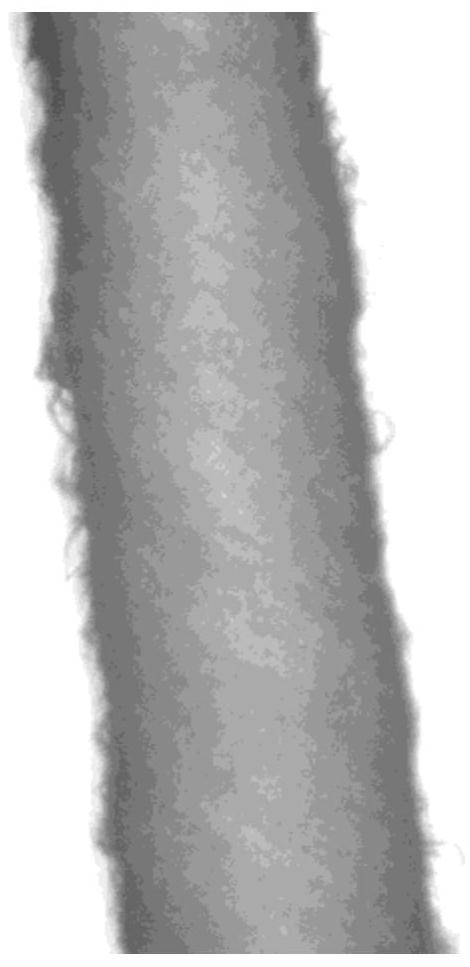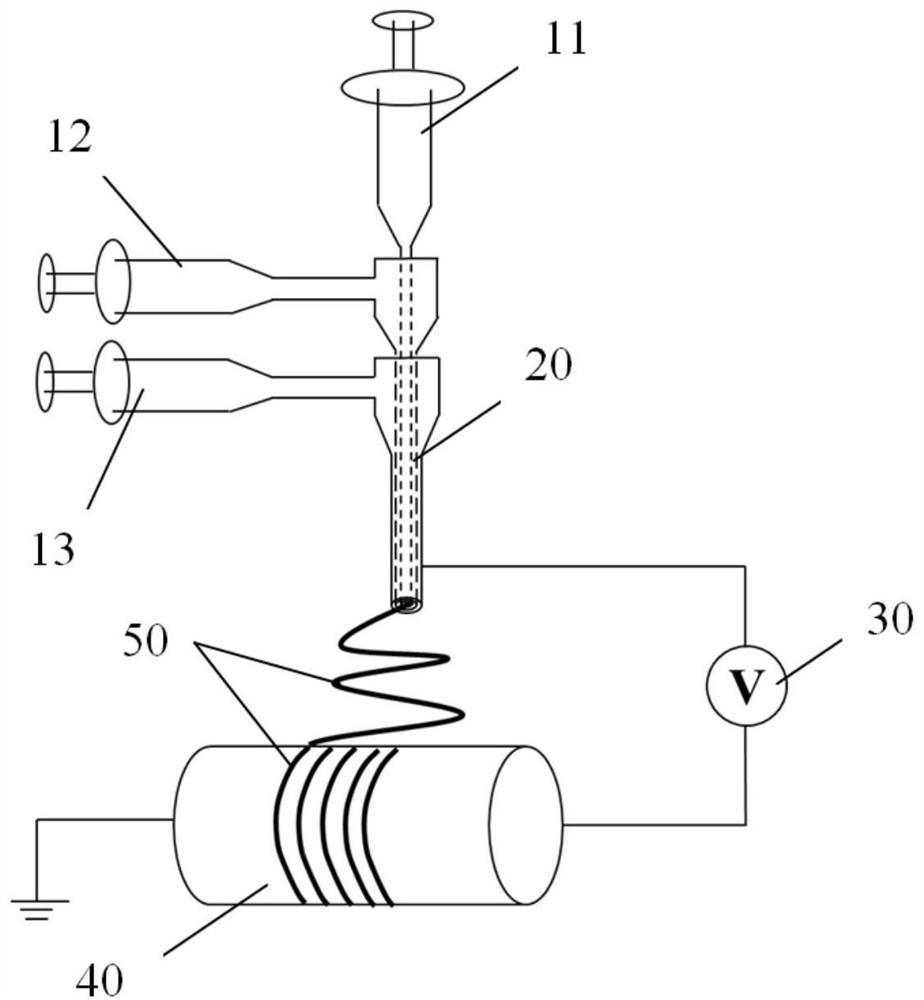Drug-loaded nanofiber for acupuncture point catgut embedding material as well as preparation method and application of drug-loaded nanofiber
A drug-loaded nano and fiber technology, applied in nanotechnology, nanotechnology, nanomedicine, etc., can solve problems such as analgesic effectiveness and safety problems, and achieve prolonged drug release time, good application prospects, and excellent biocompatibility Effects on sex and spinnability
- Summary
- Abstract
- Description
- Claims
- Application Information
AI Technical Summary
Problems solved by technology
Method used
Image
Examples
Embodiment 1
[0076] Example 1: Preparation of three-layer coaxial drug-loaded nanofibers and embedding materials
[0077] 1.1 Polylactic acid (PLA) purification:
[0078] Add 30g of PLA pellets into 180mL of dichloromethane, stir to dissolve it completely, and then add 1080mL of ethanol to form a mixed solution. At room temperature (25±3° C.), vacuum filter the solution, pour it into a petri dish, and dry it at 30° C. to obtain purified PLA.
[0079] 1.2 Solution preparation:
[0080] 0.1 g of polylactic acid purified by 1.1 was added to 0.9 g of acetone solvent, and stirred at 70° C. for 12 h to obtain a uniform polylactic acid-acetone solution (PLA solution) with a mass fraction of 10%. Weighed 267.2 mg of adenosine and added it to 1 mL of dimethyl sulfoxide (DMSO), stirred at room temperature for 30 min to prepare a homogeneous solution with a concentration of 1 M, which was designated as adenosine solution A.
[0081] 1.3 Preparation of three-layer coaxial fiber and embedding materi...
Embodiment 2 3
[0084] Example 2. Preparation of three-layer coaxial drug-loaded nanofibers and embedding materials
[0085] Take the same polylactic acid-acetone solution (PLA solution) as in Example 1, weigh 347.4 mg of adenosine and dissolve it in 1 mL of DMSO to prepare a homogeneous solution with a concentration of 1.3 M, which is designated as adenosine solution B.
[0086] 800 μL of PLA solution and 200 μL of adenosine solution B were uniformly mixed as the spinning solution for the core layer and the middle layer, and other steps were consistent with the preparation method of step 1.3 in Example 1 to obtain the drug-loaded nanofiber membrane. The three layers of coaxial drug-loaded nanofibers that make up the drug-loaded nanofiber membrane have a general structure as figure 1 As shown, it includes a shell layer 1, an intermediate layer 2 and a core layer 3 in sequence from outside to inside, wherein both the core layer 3 and the intermediate layer 2 are drug-loaded layers.
[0087] T...
PUM
| Property | Measurement | Unit |
|---|---|---|
| diameter | aaaaa | aaaaa |
| length | aaaaa | aaaaa |
| quality score | aaaaa | aaaaa |
Abstract
Description
Claims
Application Information
 Login to View More
Login to View More - R&D
- Intellectual Property
- Life Sciences
- Materials
- Tech Scout
- Unparalleled Data Quality
- Higher Quality Content
- 60% Fewer Hallucinations
Browse by: Latest US Patents, China's latest patents, Technical Efficacy Thesaurus, Application Domain, Technology Topic, Popular Technical Reports.
© 2025 PatSnap. All rights reserved.Legal|Privacy policy|Modern Slavery Act Transparency Statement|Sitemap|About US| Contact US: help@patsnap.com



